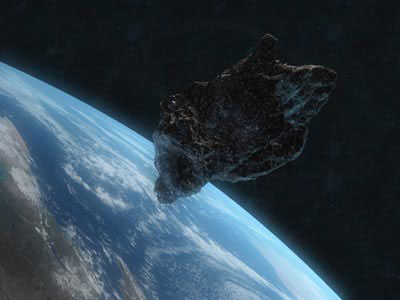The meteorite is pale when approaching the Earth
We know that meteorite collisions can cause great catastrophes for the Earth as a cataclysm. But it seems that the Earth can also attack in reverse. Approaching the Earth will create vibrations for the structure of these meteorites.

Over the past decades, astronomers have analyzed the impact of meteors on Earth.New research has examined the hypothesis that Earth also has a significant impact on meteorites from longer distances that we think.
This finding is intended to answer a question that has been asked for decades. Most meteors will change their crimson color by merciless bombardments from cosmic objects. But some meteorites scattered inside the solar system have a faded color.
A hypothesis was made that they were subjected to collisions, revealing new rocks above their surfaces.
And now, the team led by Professor Richard Binzel, MIT Institute of Technology, has verified the validity of this hypothesis and produced an interesting result.
Binzel's team used a large NASA telescope in Hawaii to gather information about nearby Earth meteorites (NEAs), including a huge amount of data about the spectrum.
Through analysis, they checked the position of 95 NEAs over 500 thousand years, tracking their trajectories to find out how close they were to Earth.
They found that 75 of the observed 95 NEAs approached the Earth at a closer distance than the moon. Among them are about 20 faint meteorites.
Binzel has determined that, if a meteorite moves at a certain distance from the Earth, about a quarter of the distance between the Earth and the moon (about 100 thousand miles), it will undergo vibrations. Seismic shaking is strong enough to be able to bring new materials from the weathered layer onto its side. This makes the meteorite look 'new'.
They hypothesize that Earth's gravity has widened and hindered approaching meteorites.
Their hypothesis will be considered in 2029, when a dark meteorite called Apophis will approach the Earth at a distance of 40,000 km.
Binzel believes that it will have surface changes leading to color changes. 'The approach distance is probably close enough to cause a disturbance with the crumbs and stones on Apophis' surface.
'It will be very interesting to watch the seismic events that will happen to Apophis when flying along, watching, listening to it cracking and' moaning 'when flying near Earth.'
- Meteors approaching Earth in 2026
- Today, a meteorite will fly close to Earth
- NASA spacecraft approached the meteorite that could collide with the Earth
- A giant meteorite just flew over Earth
- A meteorite as big as the Great Pyramid is about to fly over the Earth
- Giant meteorite approached the Earth at midnight on September 7
- Video: The 400 meter long meteorite is capable of crashing into the Earth
- How big a meteorite can wipe out life on Earth?
- The 50m meteorite may crash into Earth later this year
- NASA says a giant meteorite will fly over the Earth in the next 48 hours
- Detecting meteors with high probability of hitting the Earth
- What is Chondrit meteorite?
 Van Allen's belt and evidence that the Apollo 11 mission to the Moon was myth
Van Allen's belt and evidence that the Apollo 11 mission to the Moon was myth The levels of civilization in the universe (Kardashev scale)
The levels of civilization in the universe (Kardashev scale) Today Mars, the sun and the Earth are aligned
Today Mars, the sun and the Earth are aligned The Amazon owner announced a secret plan to build a space base for thousands of people
The Amazon owner announced a secret plan to build a space base for thousands of people